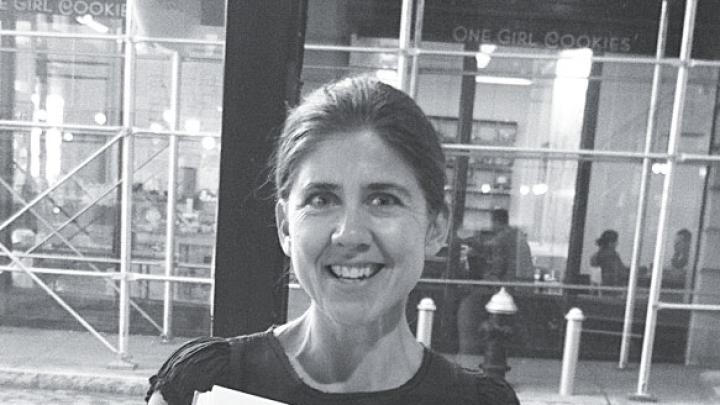Children’s book publisher Claudia Z. Bedrick ’85 knows the value of childhood memories. “There’s an intimacy we have with the books we fall in love with as young readers,” she says, and as head of Enchanted Lion Books, she has devoted herself to bringing a rich selection of meaningful picture books from around the world to American children’s eyes.
The publishing house in Brooklyn’s Red Hook neighborhood focuses mainly on translations of European and Japanese authors. It’s remained independent, holding its own in a sometimes uncertain industry and celebrating its tenth anniversary this year. Leonard Marcus, a children’s book historian and critic, sees Bedrick performing “old-fashioned publishing for children in the best sense”; her work is “very carefully considered, beautifully produced, and sent out into the world with a lot of attention.” In the past four years, five Enchanted Lion books have won New York Times Best Illustrated Children’s Books awards: Seasons, by French illustrator Blexbolex (2010); ICE, by Arthur Geisert (2011); Bear Despair by Gaëtan Dorémus, and Little Bird by Germano Zullo (2012); and Ballad (2013), also by Blexbolex, which explores in 280 pages the imagination of a child as he walks home from school observing the world.
Bedrick, who recalls with pleasure how she “explored the stacks [of Widener] and felt very comfortable and happy in that world of books,” later became involved as a graduate student and then as a staff member with the Journal Donation Project through the New School for Social Research, which sent her to library archives in eastern and central Europe. The striking materials she encountered—“many astonishing special collections of incunabula, maps, illustrated books of all kinds”—made an impact. She also “began paying attention to how many British and American children’s books had been important to the people I was meeting, and [I] thought about what it would be like if I had been able to grow up with their novels.”
She comes from publishing stock. Her father worked for Schocken Books before opening Peter Bedrick Books, which specialized in illustrated nonfiction. He sold his company in the late 1990s and retired, but in 2001, he and Bedrick’s sister, Abigail, began talking about a new company, Enchanted Lion Books. Bedrick, by then a new mother, chose to join her family in the 2003 start-up.
They planned originally to publish illustrated nonfiction for children, but after Peter Bedrick’s death in 2004, Enchanted Lion moved forward with a new focus: translating notable international children’s books for an American market. Their first selection, Prince Silencio, by Belgian author Anne Herbauts, appeared in 2006. (Many subsequent books, chosen and translated by Bedrick herself, have come from France, which has, she says, many great illustrators and “a wonderful picture-book tradition.”)
Today the family-owned firm, with its handful of regular employees, publishes 12 works a year. (Consortium Book Sales handles their distribution.) There may be no budget to wine and dine librarians, but Bedrick sees positive aspects to being a self-reliant publisher. “You can be nimble and react quickly to things,” she says. “It’s easier to follow a single-minded vision because you’re not beholden to so many people and nothing of what you do is done by committee.”
Looking ahead, she would like to shift Enchanted Lion’s focus from mostly translations to a “50-50” mix of half translations and original works—like the recent Thunderstorm, by Californian-turned-Iowan Arthur Geisert, which tells its story in a continuous picture running through the book. Works by several first-time American authors are scheduled for 2015. Looking back on her decade as an independent publisher, she nods to kindred spirits who share her vision. “There are many other authors and publishers,” she says, “who believe in wonderful and unusual books and themselves are living lives committed to creating and supporting books.”









